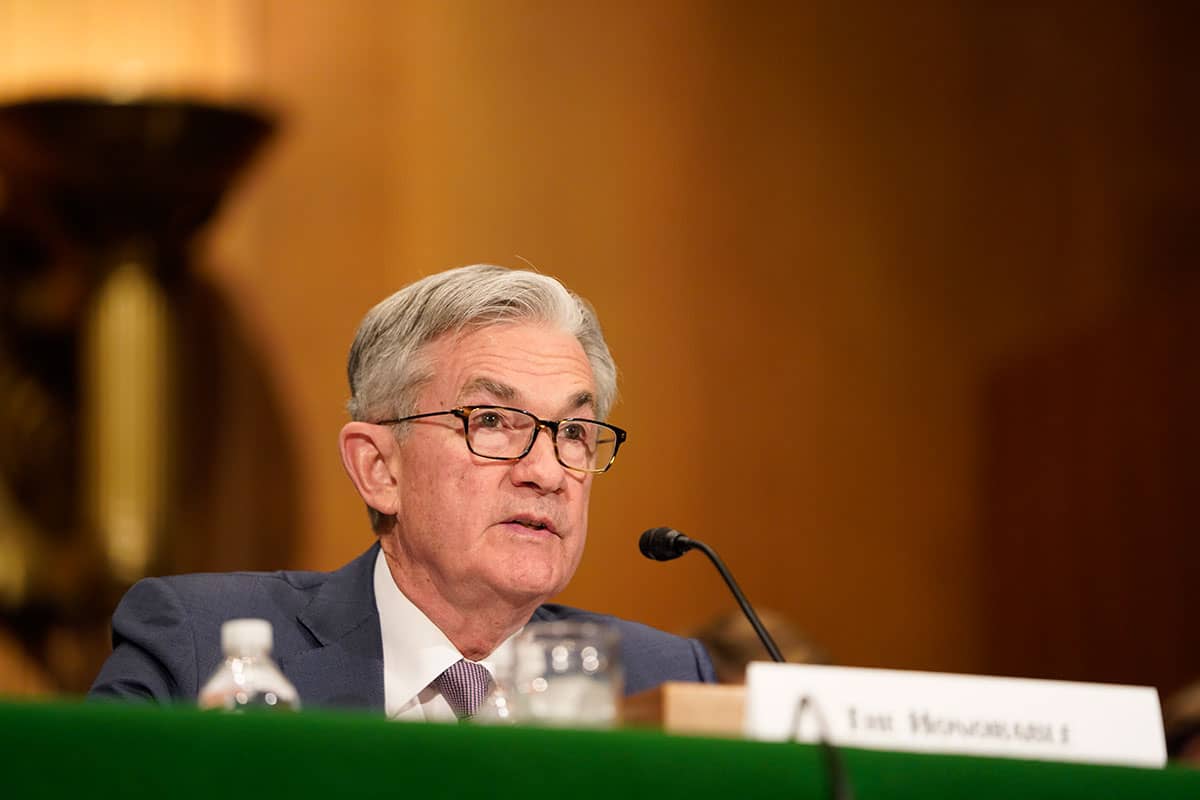GBP / USD Retraces Gains as Fed Fails to Dampen the Dollar's Spirits
- Written by: Gary Howes
-

Above: File image of Federal Reserve Chairman Jerome Powell. Image © Federal Reserve.
The British Pound rallied against the Dollar in the immediate wake of the Federal Reserve's November policy update to record a half-percent gain on the day.
However, there has been little follow-through price action as we move through the Thursday session suggesting there has been little major change in the Dollar's outlook and further gains could be expected.
The Fed opted to reduce the scale of its quantitative easing programme, as expected, however Fed Chair Jerome Powell indicated the Fed would be patient in choosing when to hike rates.
The Pound to Dollar exchange rate rallied to 1.3692 in the wake of the decision and subsequent guidance, but has since retraced those gains to quote at 1.3640 on November 04.
"In light of the substantial further progress the economy has made toward the Committee's goals since last December, the Committee decided to begin reducing the monthly pace of its net asset purchases by $10 billion for Treasury securities and $5 billion for agency mortgage-backed securities," said a statement from the Fed.
As reported yesterday, "anything north of $15BN would be deemed hawkish", therefore the figure is unremarkable when pitted against expectations and explains some of the Dollar selling seen in the wake of the announcement.
- GBP/USD reference rates at publication:
Spot: 1.3638 - High street bank rates (indicative band): 1.3260-1.3360
- Payment specialist rates (indicative band): 1.3520-1.3570
- Find out about specialist rates, here
- Or, set up an exchange rate alert, here
Global stock markets rose in the wake of the Fed's decision as investors expressed relief that the Fed did not go further in reducing stimulus.
Recall: reducing quantitative easing does not represent a tightening in conditions, indeed, the Fed will continue to expand its balance sheet into 2022.
Powell was clear that reducing quantitative easing in 2022 would not automatically invite interest rate hikes, which investors see as an outcome that would prove to be a headwind to global growth.
"Our decision today to begin tapering our asset purchases does not imply any direct signal regarding our interest rate policy. We continue to articulate a different and more stringent test for the economic conditions that would need to be met before raising the federal funds rate," Powell said.
Above: The daily GBP/USD chart shows the exchange rate to still be in a downtrend.
Secure a retail exchange rate that is between 3-5% stronger than offered by leading banks, learn more.
The rule book says that a currency should appreciate when its central bank takes a more 'hawkish' turn and depreciate when it disappoints against hawkish expectations.
Why then is the Dollar higher?
The answer most likely lies with the strong outperformance in U.S. equities of late: international money continues to flow into U.S. markets and elsewhere in the economy as investors look for exposure to the superior growth dynamics on offer.
This inflow of capital creates a bid for the Dollar and as long as investors continue to expect U.S. outperformance this trend can continue.
The Pound-Dollar exchange rate is therefore at risk of further declines, all else being equal.
The move by central banks to raise interest rates and reduce quantitative easing comes as concerns grow over rising inflation levels, not just in the U.S. but globally.
The typical reaction function of a central bank to higher inflation is to raise interest rates, which cools the economy and inflation. This is in keeping with the mandate given to most global central banks to keep prices stable.
However, cooling economic growth is typically an outcome policy makers seek to avoid and they have therefore been keen to delay taking action on the basis that inflation pressures are linked to to supply chain constraints and global energy spikes.
Powell said inflation should prove "transitory", but that transitory in this instance does not mean it will be "short-lived".
This is a significant shift in thinking that seeks to explicitly accommodate hotter-than-expected inflation for a protracted period of time.
It effectively wipes the inflation fighting function clean off the Fed's slate and suggests achieving economic growth and growing employment is the overarching concern of the Fed right now.
{wbamp-hide start}
{wbamp-hide end}{wbamp-show start}{wbamp-show end}
Powell said the Fed's new interpretation of transitory inflation is that which "will not leave behind permanently – or very persistently higher – inflation".
The Fed therefore appears to differ with the Bank of England in fearing that surges in inflation will alter how businesses and consumers respond going forward.
The Bank of England fears that high inflation will beget higher inflation down the line as businesses raise prices and workers ask for more wages.
To them this is a 're-anchoring' of inflation at higher levels and one that could concern central banks that have a clear mandate to ensure inflation does not stay permanently high.
But for the Fed inflation is unlikely to be a concern as Powell said there is "still ground to cover" in the quest to attain "maximum employment".












